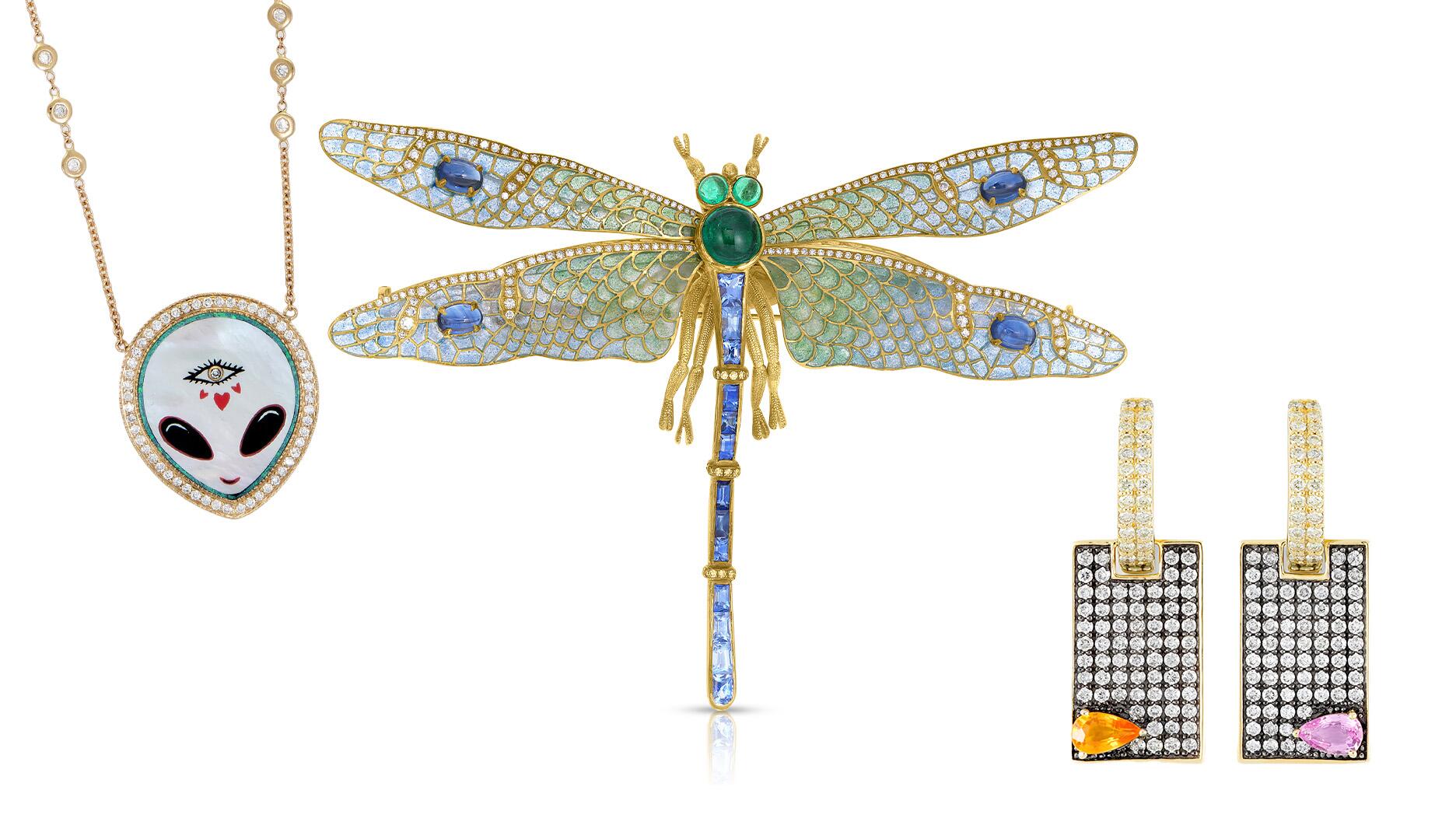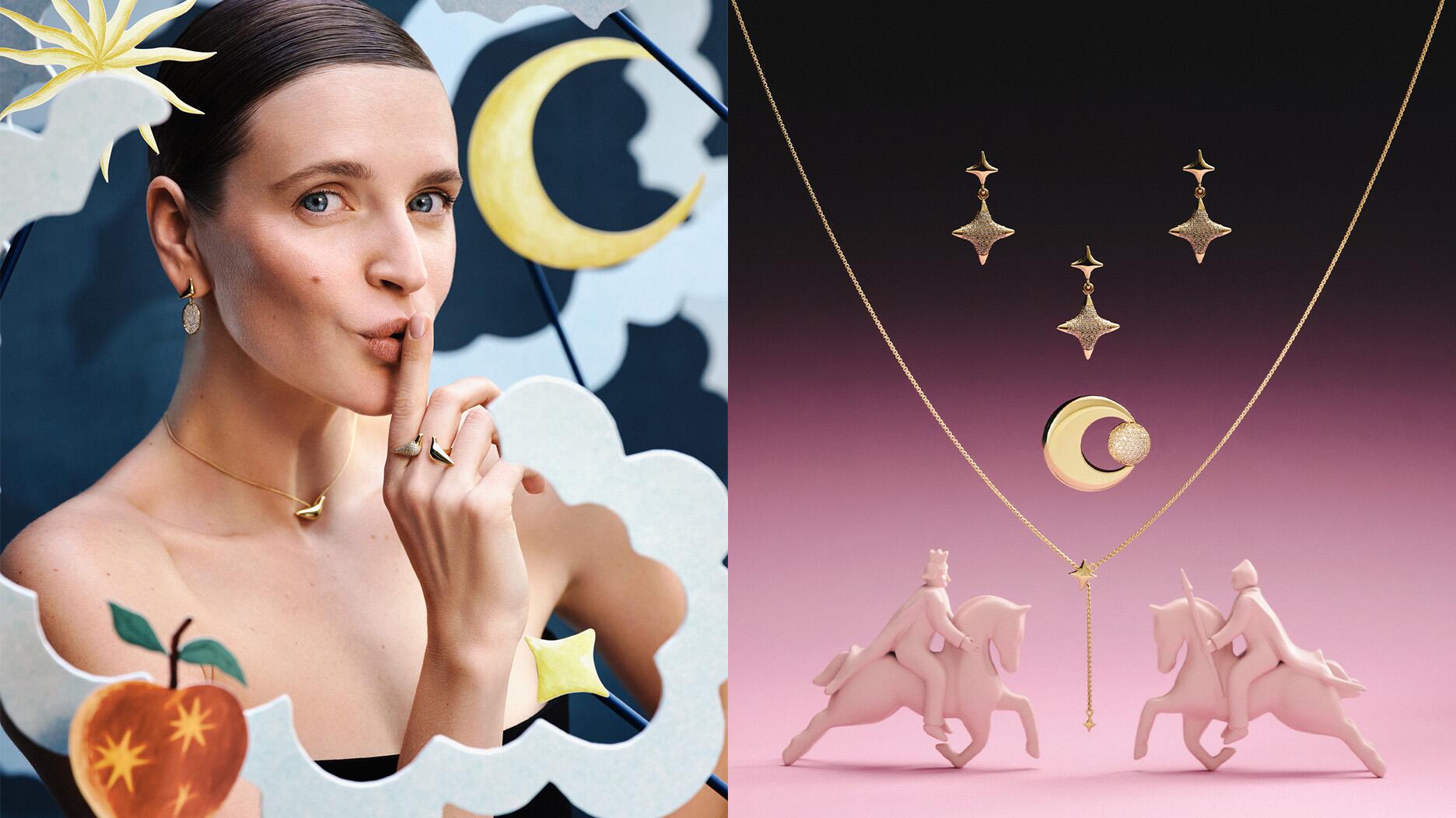The special-edition egg pendant ingested in a New Zealand jewelry store was recovered after a six-day wait.
The History Behind … eye miniatures
In this new monthly feature, National Jeweler editors delve into the when, where and why of antique jewelry. August’s focus is on eye miniatures, which first became popular in the 1770s.

New York--People generally have one of two reactions when they see an eye miniature staring back at them.
“People either love them or think they are just beautiful, or people think they are creepy,” says Cathy Gordon, an antique jewelry collector and a co-author of Miriam Haskell Jewelry. “People will see them and say, ‘That is very strange.’”
Eye miniatures first began appearing in artists’ logbooks in the 1770s and retained their popularity for nearly 100 years.
In this second installment of The History Behind … , National Jeweler explores the when, where and why of eye miniatures with Gordon, who supports her antique jewelry collecting “habit” by working at Google.
What are eye miniatures? Members of the upper class, first in France then in the U.K., commissioned artists to paint portraits of a loved one’s eye only and had them set into brooches, pendants or rings, sometimes surrounded by gemstones.
Eye miniatures also were put onto toothpick cases and patch boxes (when eye miniatures were popular, many members of the upper class carried small decals with them, which sometimes were used to hide smallpox scars), Gordon says.
These pieces also are known as miniature eye portraits or “Lover’s Eye” jewelry, though Gordon notes the latter is a misnomer, as these portraits weren’t always necessarily of one’s lover. They could depict the eye of a family member or someone else close to the wearer.
When were they popular? The earliest eye miniatures recorded in artists’ log books surfaced in the 1770s and their popularity continued until the 1850s, ceasing as photography became more widespread and the public’s fascination with these eye-only paintings began to wane. “It was a fad, to some extent,” Gordon says.
She adds that the eye miniature did enjoy a very brief revival during the Arts and Crafts movement (about 1880 to 1930), as she has a miniature of a man’s eye dated 1903 in her collection.
Why did people wear eye miniatures? Part of the broader category of sentimental jewelry, the wealthy wore eye miniatures to emphasize friendships or alliances, ease the absence of a loved one who was far away and serve as a reminder of those who had died.
Eye miniature mourning pieces are recognizable by engraved and dated inscriptions; the eye surrounded by clouds (signifying a passage into heaven) or by black or white enamel; symbols of mourning
What materials were used for these pieces? Here’s where eye miniatures pose a problem for collectors today: they typically were painted on either velum or Asian elephant ivory.
Because of federal ban on the commercial trade of elephant ivory, Gordon says it is extremely difficult to import eye miniatures painted on ivory into the United States today, even when there is appropriate certification and engraved dates on the piece proving it is an antique.
(According to the Jewelers Vigilance Committee, pieces that existed in the U.S. prior to the ban, which took effect in April, may be sold across state lines except in New York and New Jersey, which have banned the sale of elephant ivory. Under these state laws, antiques comprised of less than 20 percent elephant ivory can be sold but it requires the proper permit and proof of provenance.)
Pearls were the most commonly used stone for eye miniatures. Garnets and amethysts also were popular, as were coral and turquoise. Diamonds were used but rarely, Gordon says.
How much are eye miniatures worth? Retail prices range from $2,500 for a more simple miniature to $10,000 for pieces that have more sophisticated portraits and/or more gemstones.
How can a retailer add eye miniatures to their antique jewelry offerings? Given the complex laws surrounding ivory and the existence of fakes, Gordon gives advice for retailers that is good to follow across all product categories: find a trusted supplier.
Two Gordon recommends are Lenore Dailey and The Three Graces.
“There are many, many fakes out there,” she cautions.
She says some are portraits that have been generated on very high-quality, modern printers while others were cut out from full-sized portraits and remounted falsely as eye miniatures. One word of advice: if there’s a nose, it’s an indication that it’s probably not a genuine miniature but, rather, was part of a larger portrait at one time.
The History Behind … is a new monthly feature for National Jeweler that aims to educate readers on antique jewelry. The September feature will focus on Georgian-era mourning jewelry.
The Latest

Associate Editor Natalie Francisco plays favorites with Piece of the Week, selecting a standout piece of jewelry from each month of 2025.

The “Love and Desire” campaign is inspired by the magic that follows when one’s heart leads the way, said the brand.

How Jewelers of America’s 20 Under 40 are leading to ensure a brighter future for the jewelry industry.

Two awardees will receive free tuition for an educational course at the Swiss lab, with flights and lodging included.


Berta de Pablos-Barbier will replace Alexander Lacik at the start of January, two months earlier than expected.

Sotheby’s held its first two jewelry sales at the Breuer building last week, and they totaled nearly $44 million.

Roseco’s 704-page catalog showcases new lab-grown diamonds, findings, tools & more—available in print or interactive digital editions.

Winners will receive free registration and lodging for its fourth annual event in Detroit.

Here are six ideas for making more engaging content for Instagram Reels and TikTok, courtesy of Duvall O’Steen and Jen Cullen Williams.

The honorees include a notable jewelry brand, an industry veteran, and an independent retailer.

Carlos Jose Hernandez and Joshua Zuazo were sentenced to life without the possibility of parole in the 2024 murder of Hussein “Sam” Murray.

Yood will serve alongside Eduard Stefanescu, the sustainability manager for C.Hafner, a precious metals refiner in Germany.

The New Orleans jeweler is also hosting pop-up jewelry boutiques in New York City and Dallas.

Set in a Tiffany & Co. necklace, it sold for $4.2 million, the highest price and price per carat paid for a Paraíba tourmaline at auction.

The jeweler’s “Deep Freeze” display showcases its iconic jewelry designs frozen in a vintage icebox.

Take luxury gifting to new heights this holiday season with the jeweler’s showstopping 12-carat sphene ring.

This year's theme is “Unveiling the Depths of the Ocean.”

Starting Jan. 1, customers can request the service for opal, peridot, and demantoid garnet.

The 111-year-old retailer celebrated the opening of its new location in Salem, New Hampshire, which is its third store in the state.

The new catalog features its most popular chains as well as new styles.

The filmmaker’s personal F.P. Journe “FFC” prototype was the star of Phillips’ recent record-setting watch auction in New York.

The new location in the Design District pays homage to Miami’s Art Deco heritage and its connection to the ocean.

Inflations, tariffs, and politics—including the government shutdown—were among consumers’ top concerns last month.

“Longtime favorite” presenters, as well as first-time speakers, will lead talks and workshops at the annual event in Tucson next year.

Silas Smith of Meridian Metalworks won the challenge with his pendant that blends Australian and American landscapes.

The sale of the 31.68-carat, sunset-hued stone was part of Sotheby’s first series of events and auctions in Abu Dhabi.



























